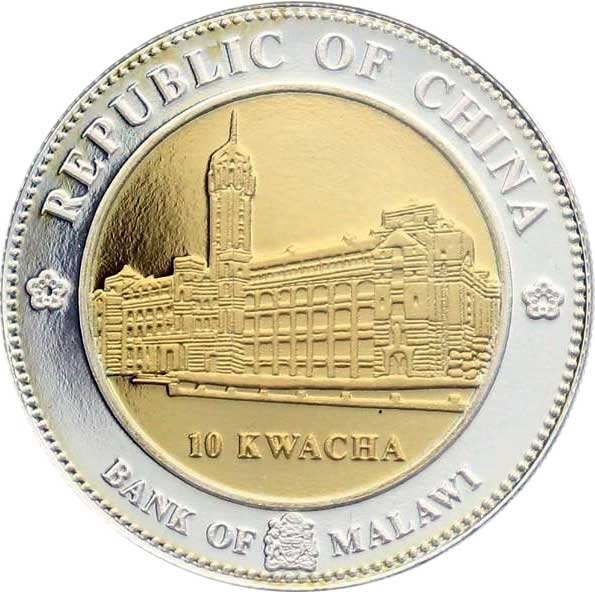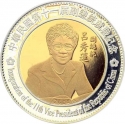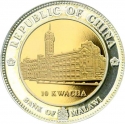You are about to finish your registration. Please check your mailbox (including spam folder). There should be a letter with a confirmation link. Check setting to make sure that your e-mail address is correct.
Send letter againDescription
The president of the Republic of China (Taiwan) is the head of state and commander-in-chief of the ROC Armed Forces. While the role once included authority over mainland China, following the 1949 Chinese Civil War, the ROC's jurisdiction has been limited to Taiwan, Penghu, Kinmen, Matsu, and nearby islands. Initially a ceremonial position elected by the National Assembly, the presidency has held executive power since 1996 when direct elections began. Presidents serve four-year terms, limited to two terms.
Obverse

|
Depicts a portrait of President Chen Shui-bian, smiling and wearing glasses, his name left on him and the date below within a center enclosed by the inscription of the event in Chinese and English. 中華民國第十 一 任總統就職典禮 |
|---|---|
Reverse

|
Depicts the presidential Palace facade in Taipei in the center, the denomination below it, and a small coat of arms of Malawi dividing the legend of the bank. REPUBLIC OF CHINA |
| Edge |
10 Kwacha
Republic
Taiwan / Republic of China
Inauguration of the 11th President
Subscribe series
KM#
Taiwan / Republic of China
Inauguration of the 11th President
Characteristics
| Type | Commemorative Issue (Non-circulating) |
| Material | Bi-Metallic |
| Ring | Silver Plated Copper |
| Center | Gold Plated Copper |
| Weight | 29 g |
| Diameter | 38 mm |
| Thickness | 3 mm |
| Shape |
|
| Alignment | Medal |





